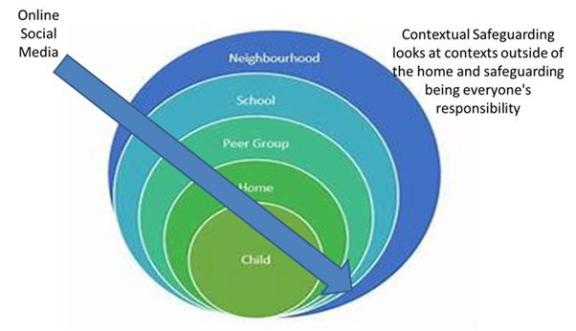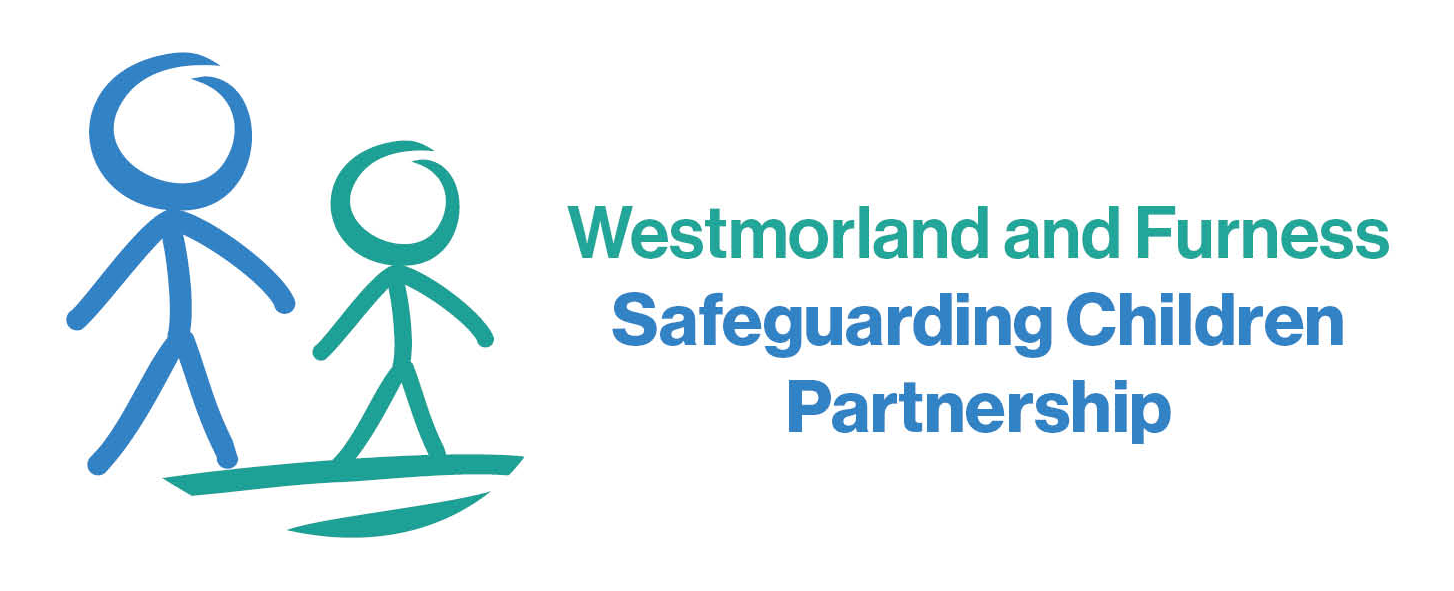Contextual safeguarding
An introduction to contextual safeguarding and useful links
Contextual Safeguarding is an approach to understanding, and responding to, young people’s experiences of significant harm beyond their families. It recognises that the different relationships that young people form in their neighbourhoods, schools and online can feature violence and abuse.
Parents and carers have little influence over these contexts, and young people’s experiences of extra-familial abuse can undermine parent-child relationships. Therefore, practitioners need to engage with individuals and sectors who do have influence over/within extra- familial contexts, and recognise that assessment of, and intervention with, these spaces are a critical part of safeguarding practices.
Contextual Safeguarding expands the objectives of child protection systems in recognition that young people are vulnerable to abuse in a range of social contexts.
Watch a video explaining the definition of contextual safeguarding (YouTube)
The University of Bedfordshire's Contextual Safeguarding Programme has information about ongoing projects exploring systems change in children’s services, the nature of and responses to extra familial harm, contextual interventions in peers, schools and communities, and sector engagement.
Durham University's Global Centre for Contextual Safeguarding also has a number of useful videos and resources relating to the topic.
Understanding contextual safeguarding
Contextual Safeguarding is an approach to keeping children and young people safe by recognising that the risks they face often come from outside the home in places including; schools, friendship groups, neighbourhoods, and online environments like social media.
Safeguarding isn't just the job of families. It’s the responsibility of everyone including schools, professionals, communities, peers, and digital platforms.
Safeguarding the whole context — from the inside out.

The diagram illustrates how a child’s world is made up of overlapping contexts that influence their development and wellbeing.
The summaries below explain how each context contributes to safeguarding for children and young people.
Child (core circle)
At the heart of contextual safeguarding is the individual child — their behaviour, relationships, and experiences. Some young people may take risks or find themselves in vulnerable situations through no fault of their own. Understanding the child’s perspective is crucial to offering the right support.
Online context: Children may encounter online threats such as cyberbullying, grooming, or pressure to engage in unsafe behaviours, often without adult knowledge.
Home and family
Parents and carers are expected to provide the primary source of love, protection, and support. However, even in stable, loving homes, children can still face risks from external environments.
Online context: Families may not always be aware of what their children are experiencing online.
Peer group
Friendships are a huge part of a young person’s life. But peer influence can also lead to unsafe behaviours such as; violence, sexual pressure, or criminal exploitation.
Online context: Harmful peer dynamics often continue or start online for example; through group chats, social media challenges, or exclusion from specific social media platforms.
School or college
Schools are key safeguarding partners. They can be places of safety and learning, but also places where issues between peers may arise.
Online context: Conflict or exclusion that starts in school can spill into digital platforms, where issues may escalate without adults seeing them.
Neighbourhood and community
The physical environment matters. Parks, streets, local businesses, and transport routes all shape a young person’s experiences. Gangs, drug networks, or unsafe adults can pose serious risks.
Online context: Exploitation and recruitment can begin online but impact young people in their real-world communities.
Social media and online environments
Social media cuts across all contexts. It’s where children connect with peers, express themselves, and form identities. But it also exposes them to risks from people they know and those they don’t.
Key concerns:
- grooming and child sexual exploitation (CSE)
- exposure to harmful content (e.g., self-harm, hate speech)
- sharing of explicit images (sexting)
- peer-on-peer abuse in group chats
- constant pressure to conform or gain approval
A shared responsibility
Contextual Safeguarding asks professionals, communities, and online platforms to work together, not just to respond to harm but to create safer spaces for children wherever they are. This includes:
- partnering with schools to respond to group-based harm
- engaging with local communities to address risks in public spaces
- supporting families to understand and manage online threats
- raising awareness of the risks to children within the online world
